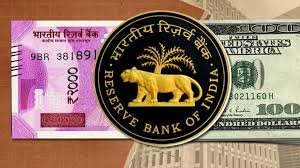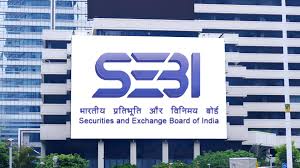The Reserve Bank of India (RBI) has announced a significant measure to address the prevailing liquidity crunch in the banking sector by initiating a $10 billion foreign exchange (forex) swap. This three-year swap auction is scheduled for February 28, 2025, and aims to infuse approximately ₹870 billion into the banking system. This move underscores the central bank’s commitment to stabilizing liquidity and ensuring the smooth functioning of financial markets.
Understanding the Forex Swap Mechanism
In a forex swap, the RBI will purchase US dollars from banks in exchange for rupees, with an agreement to sell the dollars back at a predetermined future date. This process effectively injects rupee liquidity into the banking system, addressing cash deficits and easing short-term interest rates. The current swap follows a previous $5 billion six-month swap conducted in January 2025, indicating the RBI’s proactive approach to liquidity management.
Factors Contributing to the Liquidity Crunch
The Indian banking system is currently experiencing a liquidity deficit of approximately ₹1.7 trillion. Several factors have contributed to this shortfall:
- RBI’s Dollar Sales: To protect the rupee from excessive volatility, the RBI has been actively selling dollars in the spot market. While this intervention supports the rupee, it simultaneously reduces rupee liquidity in the banking system.
- Fiscal Year-End Demand: March marks the end of the fiscal year in India, a period traditionally associated with increased demand for funds as businesses and financial institutions settle accounts and meet regulatory requirements.
- Global Economic Factors: Global financial uncertainties, including trade tensions and fluctuating commodity prices, have led to cautious lending and investment practices, further tightening liquidity conditions.
RBI’s Comprehensive Measures to Enhance Liquidity
Beyond the forex swaps, the RBI has implemented several strategies to bolster liquidity:
- Open Market Operations (OMOs): The central bank has conducted open market bond purchases, injecting over ₹3.6 trillion into the banking system over the past five weeks.
- Long-Term Repos: By offering longer-term repos, the RBI provides banks with access to funds for extended periods, ensuring sustained liquidity support.
- Interest Rate Adjustments: In February 2025, the RBI reduced the repo rate by 25 basis points, the first cut in nearly five years, aiming to stimulate economic activity and encourage lending.
Market Reactions and Expert Insights
The announcement of the $10 billion forex swap has been met with positive reactions from market participants:
- Impact on Forward Premiums: Following the announcement, the one-year dollar/rupee forward premium dropped by 12 basis points to 1.99%, its lowest since December 2024. This decline indicates reduced hedging costs for businesses with future dollar obligations.
- Short-Term Bond Yields: Yields on four-year and five-year government bonds decreased by two basis points, reflecting improved liquidity conditions and positive sentiment in the bond market.
- Expert Opinions: Economists suggest that the RBI may need to inject an additional ₹500 billion to ₹1 trillion in liquidity through open market purchases before the fiscal year ends to maintain neutral liquidity levels. reuters.com

Why This News Is Important
The RBI’s decision to inject $10 billion through a forex swap is a critical intervention aimed at alleviating the liquidity deficit in India’s banking system. This move is particularly significant for several reasons:
- Economic Stability: Adequate liquidity is essential for the smooth operation of financial markets and the broader economy. By addressing the cash shortfall, the RBI helps maintain economic stability, which is crucial for sustained growth and development.
- Support for Businesses: Improved liquidity conditions lead to lower borrowing costs for businesses, enabling them to invest, expand, and contribute to economic progress. This is especially beneficial for small and medium-sized enterprises that rely heavily on bank financing.
- Monetary Policy Transmission: The effectiveness of monetary policy measures, such as interest rate cuts, depends on the liquidity environment. By enhancing liquidity, the RBI ensures that its policy decisions translate into tangible benefits for the economy, including increased lending and investment.
- Currency Stabilization: The forex swap not only injects rupee liquidity but also helps manage the exchange rate by influencing dollar supply and demand dynamics. This dual impact supports the RBI’s broader objectives of currency and financial stability.
- Preparation for Fiscal Year-End: The fiscal year-end often brings heightened financial activity and demand for funds. Proactively addressing liquidity needs ahead of this period demonstrates the RBI’s commitment to ensuring a stable financial environment during critical times.
Historical Context
The use of forex swaps by the RBI is a strategic tool to manage liquidity and stabilize the currency. Historically, the central bank has employed various instruments, including open market operations, repo agreements, and forex interventions, to address liquidity challenges. The current $10 billion swap follows a $5 billion six-month swap conducted in January 2025, reflecting the RBI’s adaptive approach to evolving economic conditions. These measures are part of a broader monetary policy framework aimed at fostering economic stability, controlling inflation, and supporting growth.
Key Takeaways from RBI’s $10 Billion Forex Swap Announcement
| S.No. | Key Takeaway |
|---|---|
| 1 | RBI announces a $10 billion three-year forex swap to inject ₹870 billion into the banking system. |
| 2 | The swap aims to address a liquidity deficit of approximately ₹1.7 trillion in the banking sector. |
| 3 | This move follows a previous $5 billion six-month swap conducted in January 2025. |
| 4 | Market reactions include a 12 basis point drop in the one-year dollar/rupee forward premium to 1.99%. |
| 5 | Economists anticipate the need for an additional ₹500 billion to ₹1 trillion in liquidity injections before the fiscal year ends. |
Important FAQs for Students from this News
Q1: What is a forex swap, and how does it work?
A forex swap is a financial instrument where two parties exchange currencies with an agreement to reverse the transaction at a later date. In this case, the RBI will buy US dollars from banks in exchange for rupees and sell them back after three years.
Q2: Why has the RBI announced a $10 billion forex swap?
The RBI has announced this forex swap to ease the liquidity crunch in the banking sector by injecting ₹870 billion into the financial system.
Q3: How does this forex swap affect the banking system?
The swap provides additional liquidity to banks, allowing them to lend more, manage cash flow efficiently, and stabilize short-term interest rates.
Q4: How does forex swap influence the Indian Rupee?
By increasing the supply of rupees in the market, the RBI helps manage currency fluctuations and ensures that the rupee remains stable against the US dollar.
Q5: What other steps has the RBI taken to manage liquidity?
Apart from forex swaps, the RBI has used Open Market Operations (OMOs), long-term repo operations, and interest rate adjustments to enhance liquidity.
Some Important Current Affairs Links


















